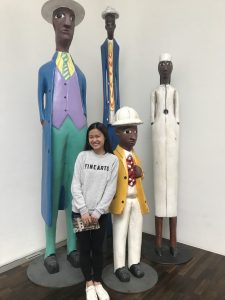On the first weekend of our program, our class went to a French rugby game. Although I didn’t know the rules of rugby, I still had a great time watching players piling up and colliding each other. There were lots of collisions between players in the game and some of those may even result in concussions. As we learned in our 402W class, concussions result in long-term cognitive deficits, such as memory problems and shrinkage of the brain area. Therefore, it would be important to know the possible risks of participating certain sport with high collision. risk. In the end of the game, we watched Mika’s concert. The lighting effects were great and I’m glad that I went to the game!

The rugby game








